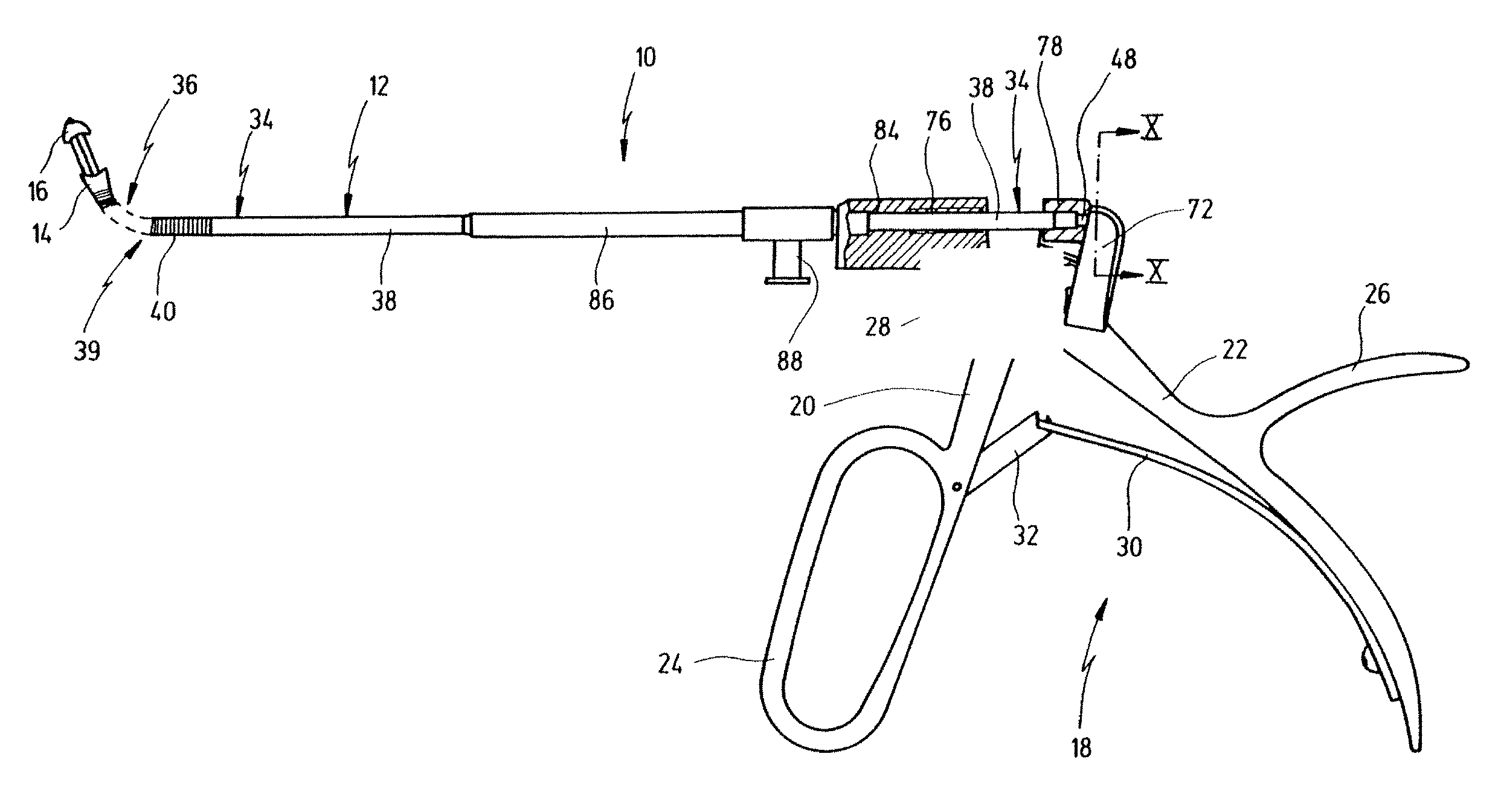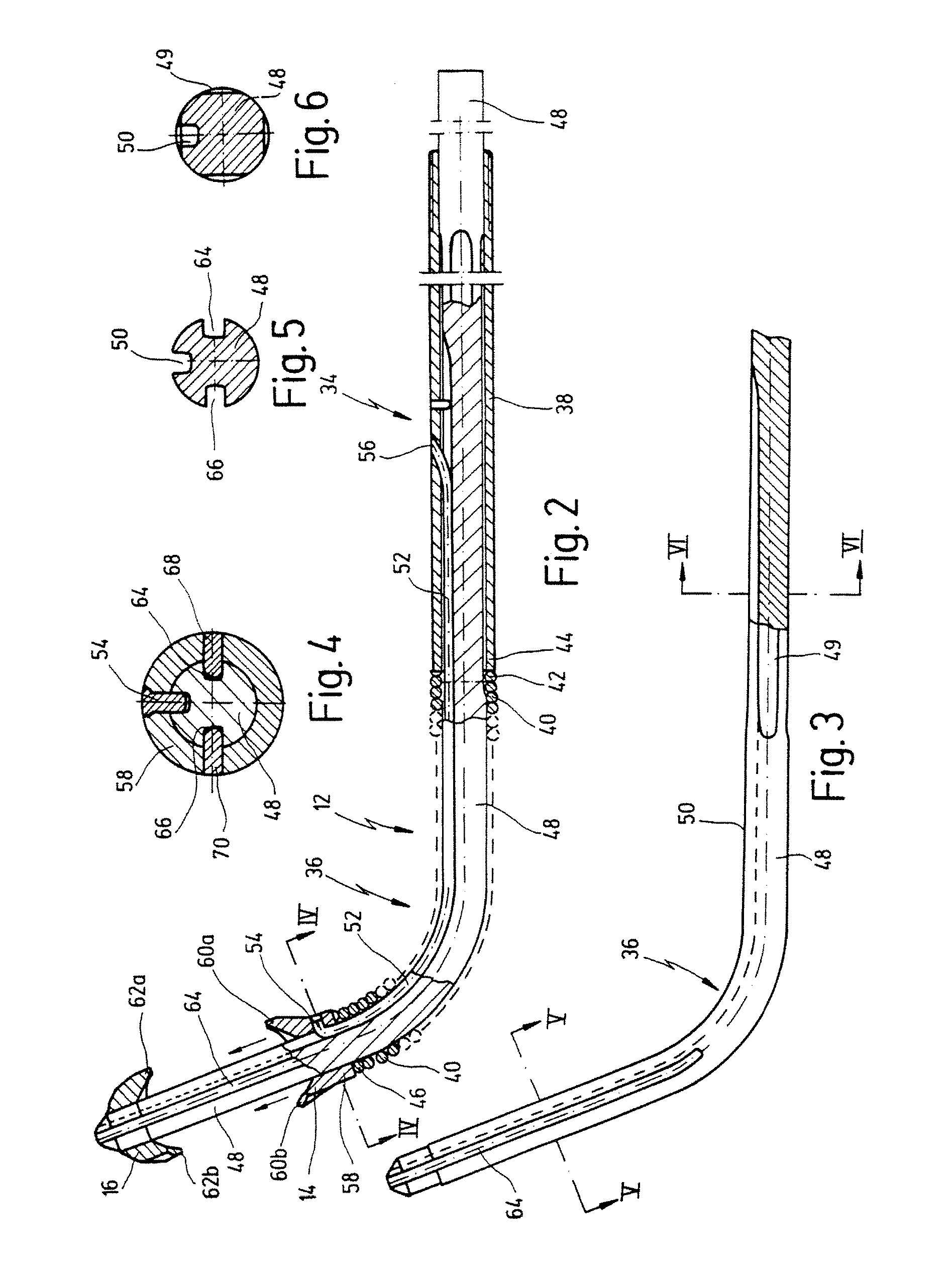Medical instrument for dissecting tissue
a technology of medical instruments and tissue, applied in the field of medical instruments for dissecting tissue, can solve the problems of unable to transmit tensile or pull forces, unable to meet the needs of patients,
- Summary
- Abstract
- Description
- Claims
- Application Information
AI Technical Summary
Benefits of technology
Problems solved by technology
Method used
Image
Examples
Embodiment Construction
[0104]FIG. 1 shows a medical instrument according to a first aspect of the invention, indicated generally by reference numeral 10.
[0105]Instrument 10 serves for dissecting tissue in the human or animal body.
[0106]Instrument 10 comprises an elongated shaft 12. A movable tool 14 is arranged at a distal end of shaft 12. Further, an immovable tool 16 is arranged at the distal end of shaft 12, distally before movable tool 14.
[0107]At the proximal end of shaft 12, a handle 18 is arranged that comprises a movable grip element 20 and an immovable grip element 22.
[0108]Movable grip element 20 comprises a ring 24 through which one, two or three fingers can be slipped. Immovable grip element 22 comprises an extension 26, projecting in proximal direction, against which the hollow between the thumb and the index finger comes to rest during operation of the instrument.
[0109]Movable grip element 20 and immovable grip element 22 are connected one with the other via a hinge joint 28, a pivot axis of...
PUM
 Login to View More
Login to View More Abstract
Description
Claims
Application Information
 Login to View More
Login to View More - R&D
- Intellectual Property
- Life Sciences
- Materials
- Tech Scout
- Unparalleled Data Quality
- Higher Quality Content
- 60% Fewer Hallucinations
Browse by: Latest US Patents, China's latest patents, Technical Efficacy Thesaurus, Application Domain, Technology Topic, Popular Technical Reports.
© 2025 PatSnap. All rights reserved.Legal|Privacy policy|Modern Slavery Act Transparency Statement|Sitemap|About US| Contact US: help@patsnap.com



